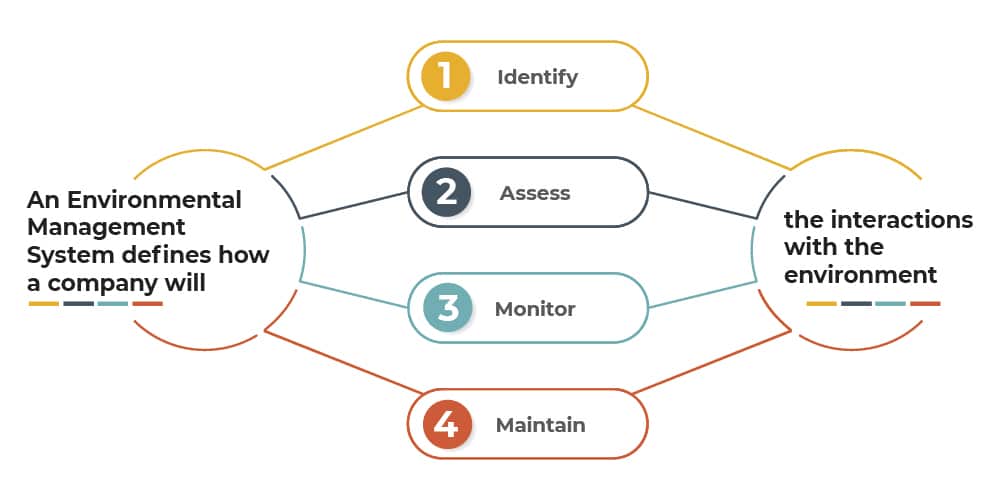An Environmental Management System, often called an EMS, is a set of internal rules which are defined by a collection of policies, processes, procedures and records. This system defines how a company will identify, assess, monitor and maintain the interactions with the environment in order to prevent negative environmental impacts. When implemented in your company the EMS needs to be specific for the processes you use, so it is important to tailor it to your needs. However, ISO 14001 provides some guidelines for a good EMS to help ensure that you do not miss elements of a good system. In this way, the International Organization for Standardization (ISO) helps standardize how an EMS is designed.
An EMS defines how a company will identify, assess, monitor, and maintain the interactions with the environment in order to prevent negative environmental impacts.
Common Elements of a Environmental Management System
Environmental Management System processes start with identifying the ways that the business processes of the company interact with the environment, and then providing the controls and procedures to ensure that negative impacts are avoided. These processes also include identifying all the environmental requirements, both legal and from other parties, that are imposed on the company activities.
Additionally, the support processes for this to happen are controlled as part of the system. This will include managing resources like people and equipment, procedures to control documents and records, and documents defining how to control products or services which do not meet requirements.
Finally, some processes of the EMS are designed to monitor the procedures that are implemented for the system and lead to improvement. These processes will include a method of auditing the system processes, means of applying corrective and preventive actions for problems and a way for management to review the system in order to ensure requirements are met and improvement plans are made.
One of the best ways to ensure that your system has included all applicable processes is to refer to a standard set of requirements for Environmental Management Systems. The ISO 14001 standard is the main set of requirements for this, which is recognized worldwide and defines and outlines all the typical policies, processes, procedures and records that are needed for a successful EMS. It is non-prescriptive, meaning it specifies what needs to be done but not how, and can be used and tailored for the needs of any organization.
Why is an EMS important
Environmental Management Systems go beyond just complying with the law. It is expected that a company will know and meet all the environmental requirements that are specified for their operations, but not every company will look past this and work towards improving their operations with respect to reducing the negative impacts on the environment. This is the reason for having an environmental management system, and is the biggest selling point for why a company would want to implement such a system. Reducing your environmental impact can help gain market share in a world with ever growing environmental awareness.
For information on an Environmental Management System for ISO 14001 see What is ISO 14001?

 Mark Hammar
Mark Hammar 






